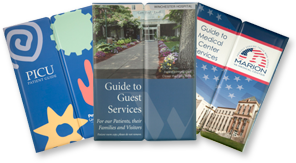Written by: Yasmine Mustafa
Healthcare workers may be providing an essential service to communities across the globe, but that doesn’t make them immune to workplace violence. In fact, their direct contact with the patients puts them at quite a high risk. The numbers can be rather staggering — in 2018 alone, healthcare workers made up 73% of all injuries experienced due to workplace violence.
As it turns out, nurses are in particular danger, especially when it comes to assault. Unfortunately, this workplace epidemic is unlikely to pass on its own. For as long as nurses have existed, they’ve had to deal with unwanted advances, inappropriate comments, touching, groping, and assault. However, wearable technology has given us a way to fight back or, at the very least, prevent assault.
What Is Wearable Technology?
As the name itself implies, wearable technology includes electronic devices which the user wears as accessories or on clothing. These can be hands-free often connected to the internet, or wireless bluetooth devices, and are incredibly convenient. When made small enough, wearable technology can be practically unnoticeable.
Nowadays, wearables have many uses. You can buy smartwatches that act as mini computers, fitness trackers that count steps, Bluetooth headsets that allow you to listen to music, and so much more. Some wearables, such as panic buttons, are designed with the wearer’s safety in mind. They may protect them from assault or even save their lives.
How Wearable Technology Protects Nurses
Though the situation has never been ideal, the pandemic has only made it worse for nurses. Workplace violence in healthcare has been on the rise. For many nurses, the pandemic has been a nightmare in more ways than one.
Some U.S. hospitals have recognized this problem and begun equipping nurses with panic buttons and similar wearables. After all, they are the first line of defense against assault, and for a good reason. Let’s take a closer look at how panic buttons can help.
1. They Immediately Alert Security
Panic buttons for nurses are incredibly efficient, ensuring the victim receives help within mere minutes. Here is how the device works — the device is non-intrusive & wireless and offers live transmission irrespective of WiFi coverage or even dead spots. When pressed, it sends a discreet signal directly to the device, reporting the exact location to the designated security personnel or managers to react immediately.
When it comes to a potential assault, every moment counts. The faster the security personnel responds, the better. And hardly anything can send a warning as quickly as a panic button.
2. Its Small and Draws No Attention
When facing someone who’s harassing you, calling for help can be dangerous. In some cases, it may cause the situation to escalate further than it would otherwise. Thus, while getting help is still a priority, one should be careful about how to go about it.
That’s clearly a challenging task, especially in such stressful circumstances, but it becomes easier with a panic button. These buttons are generally small and inconspicuous — perfect for hiding and discreetly pressing. They make no sound and resemble a regular button or another accessory. Thanks to that, the harasser likely won’t notice it and try to take it away.
3. Knowing that it’s There May Deter Some Attacks
While harassers shouldn’t know where the button is or when it’s activated, they could know it exists. If they’re aware that a nurse may press the panic button in case their behavior becomes inappropriate, they may be more willing to restrain themselves. The knowledge itself can act as excellent prevention, though it’s not quite foolproof.
Does Wearable Technology Really Help?
Wearable technology clearly has a lot of promise, but does it actually work in practice? Many hospitals seem to think so, as they’ve started equipping their nurses and other medical staff with panic buttons.
However, that alone might not be enough. Panic buttons may prevent some assaults, but their primary purpose is to bring about a quick response to it. In other words, when a nurse uses a panic button, she is most likely already in danger.
Complete prevention may be impossible to achieve, but hospitals can still do their best by implementing best practices and training their staff accordingly.
Another good prevention method could be staffing two nurses together whenever possible. That drastically lowers the chances of harassment or assault, as attackers usually look for lone victims that might have trouble defending themselves. This method, combined with panic buttons or other similar wearables, may bring about some real change.
In Conclusion
If any profession could benefit from safety wearables, it’s undoubtedly nursing. Due to a large amount of patient interaction, nurses frequently experience sexual harassment and assault. Sadly, they often feel like they can’t do much about it. Or it was like that in the past, at least.
Now that panic buttons and wearable technology are seeing more widespread use; nurses may finally be able to protect themselves. Of course, that alone isn’t enough — hospitals need to put even more effort into protecting their staff. Still, safety wearables are certainly a step in the right direction.
Yasmine Mustafa is the co-founder and CEO of ROAR for Good, a technology company dedicated to workplace safety.
The views expressed by guest contributors are those of the authors and do not necessarily represent the views of, and should not be attributed to, Campus Safety magazine.
Article reprinted with permission from Campus Safety Magazine (http://www.campussafetymagazine.com/). To sign up for their eNewsletter, visit https://www.campussafetymagazine.com/newsletter-subscription/







